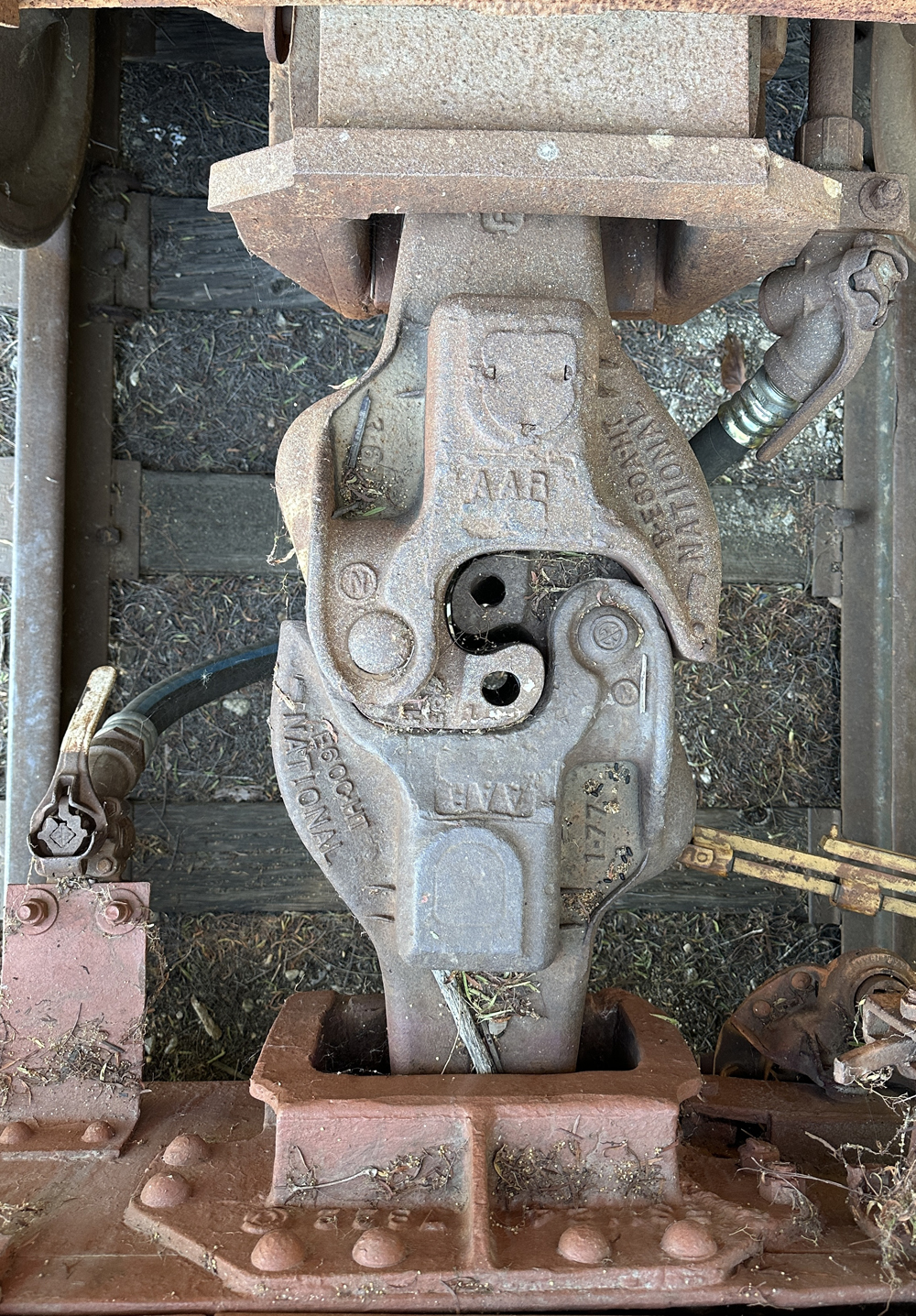What are couplers?
Ever since the locomotive was invented, a coupling device was needed to pull cars behind it. Link and pin couplers were the start of couplers in the United States.
In fact, they were famous for crushing fingers and hands of brakeman who held the link in one hand while dropping the pin at exactly the right time with the other. The fix to this was the semi-automatic coupler.

According to the United States Patent Office, the original design was patented in 1873 by Eli Janney. It was a very crude design to what we have today, but the basic concept has remained the same. Once the spring loaded bar is pulled, the knuckle unlocks and springs open. This now allows the couplers to come together, and the force locks the knuckle back in place.
To uncouple, one of the levers must be pulled, repeating the cycle. The problem with its design, is that it forced the brakeman to still be between the car bodies in order to actuate the uncoupling lever.
Various inventors made their own versions or improvements to the knuckle coupler. Some had a slot in the knuckle to allow for a pin when interchanging with railroads that still used link and pin. One of the best improvements was to create an uncoupling lever to the outside edge of the car, thereby eliminating the need for a brakeman to go in between the cars except in the need to lace up air hoses and open or close angle cocks.
In 1916, the Master Car Builders, predecessor of the Association of American Railroad, made the Type D coupler as the standard for the country. It had interchangeable parts that made replacement easier and less time consuming than those that became before it.
In 1930, the American Railway Association adopted the Type E coupler. Still used to this day, it also had interchangeable parts like the Type D but even more refined. Today the Type E and Type F are the most common couplers seen in North America. The knuckles are not interchangeable as the knuckles on the Type E have a rounded corner whereas the Type F have a square corner. Both types also come in a shelf and double shelf variants. These shelf variants are used for hazmat cars in order to prevent vertical movement of the couplers that could lead to tank car shell punctures.
Sometimes, throughout the course of railroading, a knuckle breaks causing the train to separate and go into emergency. The poor conductor then needs to walk back, find the break, and replace the knuckle — a task learned in training that one hopes to never have to do. The rear pilot of most road locomotives carries a spare of a Type E and a Type F knuckle.
Unfortunately, because they aren’t interchangeable, it’s a 50-50 shot as to which knuckle the conductor will need to grab. Hopefully, it the right one on the first try!
To read more on couplers, click here.














Curious? How much does a replacement knuckle weigh?
The conductor doesn’t have to risk picking the wrong one. Once he identifies the problem, I the engineer ask him what kind will needed. I get down throw that one next to the track, and light a fusee. I then pull the train forward with Conductor on the rear…he sees the fusee, stops me, loads up the knuckle with some tools, and shove back to the break. Not hard, and minimal iron toting.